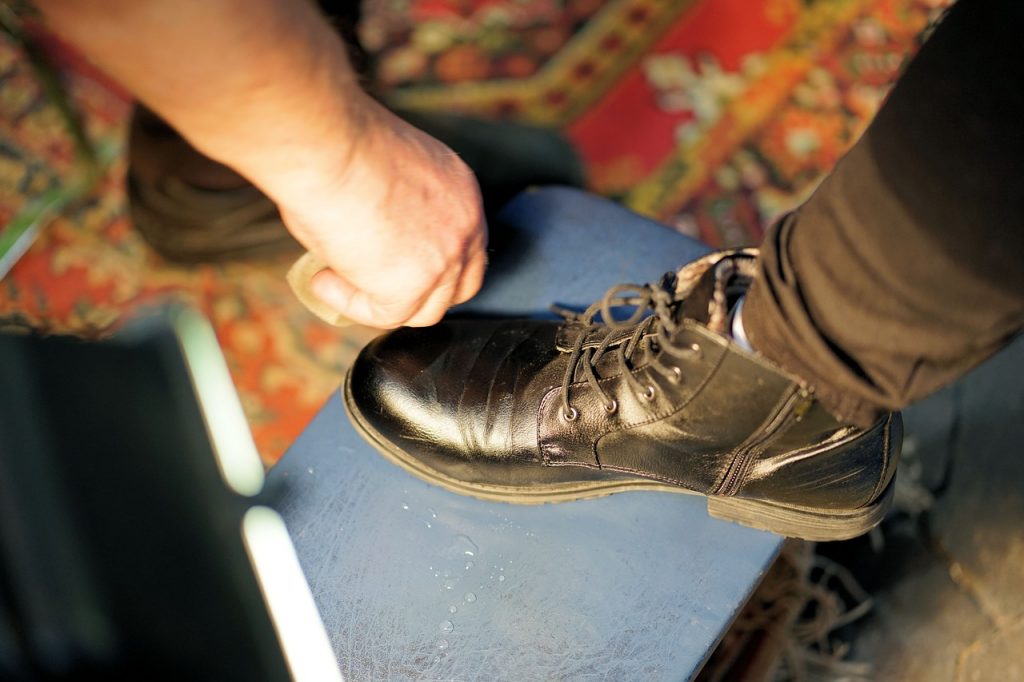How to Paint High Rooms on Stairs | Tall Walls Above Stairwell?
Painting is among the easiest of projects that a homeowner can tackle by themselves. However, when it’s time to paint the tall walls in a stairwell, this simple project can quickly become complicated. Although it can seem impossible to paint a tall wall or really high ceiling over stairs, it can be achieved without calling in professionals.
Although not nearly as simple as painting standard height walls in other rooms from the comfort of the floor, there are some tips and tricks to help you along your way. Professionals have long used these methods to tackle this imposing job.
Safety First Always
As with any home renovation project, it’s imperative that you work safely and take all necessary precautions. If you have a fear of heights, it’s probably best that you refrain from painting tall walls or ceilings above a stairway.
Unfortunately, there is no way that a thorough job can be done without somebody getting up on a ladder or scaffolding. If you’re unwilling to work in the air and have no one offering help, contact one of the many available professional painters on the market for help with the project.
Tools of the Trade
In order to paint tall walls above a staircase you’ll need a slightly different set of tools than what’s required to paint normal rooms. You’ll still be using rollers for the large spaces and quality sash brushes for cutting in corners along trim near the floor or ceiling. What will be different, however, are the few tools specially designed for working up high above your head.
The single most essential tool you’re going to need will be an extension ladder. Many professionals prefer an aluminum ladder because of how light they are. An extendable pole for your roller will allow for a lot of the work to be done from the safety of the floor. Every bit of work that can be done from the floor or on the stairs should be, as it will save considerable effort.
It may be the case that your walls and ceiling are too high above the stairs to be reached even with an extension ladder. In this scenario, scaffolding may be the solution. Scaffolding is assembled in sections, allowing for more sections to added until the ceiling is within reach.
Although a roller fitted with an extendable pole handle will help with most of the high painting, cutting in along the ceiling must be done by hand with a regular sash brush as would be done along cabinets in a kitchen.
Setting Up the Work Area
Painting in tall rooms requires thoughtful setup. To achieve a professional quality outcome in a safe manner, don’t rush into the work. Step back from the project, and try identifying any issues that may arise before they do. Obstacles when working high above one’s head can make for dangerous situations.
How you’ll set up your specific work area depends on how high your ceilings are. If you’re using scaffolding, be sure all locking mechanisms are engaged. Always use proper fall protection. Read manufacturer instructions before setup. Be sure that they’re followed strictly.
If you’ll be working from an extension ladder, there are multiple ways the ladder can be set up. In stairwells where the wall directly opposite the stair risers is close enough, you can foot the ladder against the stair riser and prop it against that wall. Be sure to use foam pads to protect the area of the wall that is in contact with the ladder. When this method is used, a platform can be made using a plank to create a level surface from the stair of your choice to its corresponding rung.
In certain rooms, a leveling platform can be used that will match the height of the stair on which the ladder is stood. This allows for the ladder to be stood sideways in the stair well and leaned up against one of the side walls. This method isn’t always possible, however, and will require the leveling platform.
No matter how it is that you’ll reach the high areas that you’re painting, protecting the floor is always necessary. Drop cloths or plastic sheeting can be laid down over the stairs. This will, however, make the stairs quite slippery. Always use caution when working on any such surface.
It’s Finally Time For Paint
Once a safe, effective work area has been established, it’s time for painting. Regardless of the level of gloss in the paint you’ve chosen, a few key techniques will be used in painting. When rolling, try to work in continuous strips from as low to as high as is possible. This will help in mitigating stopping marks in the paint.
Always try achieving as much coverage as is possible with the roller. Doing so will reduce the width of the area that you’ll be painting by hand along the edge of the ceiling or trim. Also do as much as possible from the safety of the landing if one is present. This will save a lot of the time you’ll spend up in the air, ultimately making the job much easier.
Watch out for runs in the paint. These must be caught while wet. Roll or brush over them as soon as they’re noticed. Making sure the brush or roller isn’t over-saturated will help in avoiding this problem.
Video: Paint High Stairwells
This video shows a professional method for painting high interior stairwell rooms. The techniques shown here will make easy work of the task. If there are any questions in your mind about whether or not you’ll be up to the task, watch the video. It’s quite straightforward and informative.
You are currently viewing a placeholder content from Youtube. To access the actual content, click the button below. Please note that doing so will share data with third-party providers.
Watch the video here for more information.


